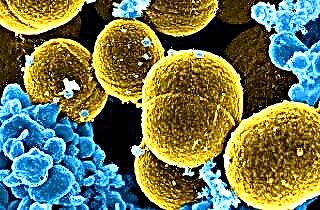Reasons for development
There are many risk factors that provoke the appearance of pathology:
- Elderly age (over 59 years old).
- Male gender.
- Complicated family history (the presence of associated clinical conditions in relatives under the age of 55, which include strokes and transistor ischemic attacks, diabetic nephropathy and chronic renal failure, optic nerve edema, retinal hemorrhages).
- Lipid spectrum disorders (increase in total cholesterol and atherogenic lipids, decrease in high-density lipoproteins). It has been proven that with a sterol level of less than 5.0 mmol / L, the risk of developing the disease is 0.5%, with an increase to 7.8 mmol / L or more - 2.3%. Hypercholesterolemia is a key factor leading to atherosclerosis, which causes occlusion of the coronary arteries and malnutrition of the heart. In women, lipid metabolism pathology is observed 2-3 times less often.
- Arterial hypertension.
- Obesity (body mass index above 30).
- Diabetes mellitus or impaired glucose tolerance.
- Smoking.
- Consuming alcohol regularly. A dose of 20 g of pure ethanol per day for the weak and 40 g for the stronger sex for 6 months or more is considered dangerous.
- Frequent neuro-emotional overload (stress, increased fatigue). The mental component of women, as a rule, is more susceptible to failures due to physiological characteristics.
- A mutation in the CDH13 gene, which is transmitted in an autosomal dominant manner.
Women are more likely to suffer from arterial hypertension, diabetes mellitus and obesity, but the deposition of fiber in the female pattern rarely leads to coronary artery disease. Smoking is the main risk factor.
In men, a significant role in obstruction of the arteries supplying the heart is played by a violation of the lipid profile (high levels of atherogenic lipids (LDL, TAG) and total cholesterol).
The more risk factors a person has, the higher the incidence of ischemic heart disease, as well as the lower the age at which the disease manifests itself.
Classification
At the moment, a variant of the IHD systematics has been adopted, which assumes the presence of the following forms:
- Sudden death from coronary heart disease (eg, cardiac arrest).
- Angina pectoris. Allocate stable (manifestations do not change over time), first appeared (duration of the course is less than 2 months) and unstable (progression of clinical symptoms).
- Myocardial infarction is a necrotic transformation of the heart muscle.
- Sclerotic changes.
- Any disturbances in rhythm and impulse conduction.
- Insufficient blood circulation.
For the convenience of diagnosis, myocardial necrosis and unstable angina pectoris are combined by a common term - acute coronary syndrome.
Clinical signs
The main manifestations of any variant of angina pectoris are:
- Back pain from sternum and shortness of breath. Appear or significantly increase with physical or psycho-emotional stress.
- Feelings of palpitations or heart interruptions. They are associated with arrhythmias, accompanied by weakness, dizziness, fainting.
- Signs of heart failure. With dysfunction of the left half of the heart, pulmonary edema is observed (shortness of breath, heaviness in the lower chest). Violations of the right ventricle and (or) atrium contributes to the formation of leg edema, an increase in the size of the spleen and liver.
Symptoms have pronounced gender differences.
A number of studies have shown that the first signs of coronary heart disease in women are:
- increased fatigue;
- any sleep disturbances;
- shortness of breath when exposed to psychoemotional factors.
In men, chest pain always comes to the fore during exercise and at rest, a feeling of lack of air. They often do not pay due attention to chest discomfort and do not go to the doctor in a timely manner, self-medicating for a long time. Lack of fast and adequate therapy is a guarantee of an unfavorable prognosis.
Symptoms of coronary heart disease in women, such as pain and shortness of breath, are more often nonspecific. Pain syndrome is represented by a tingling sensation or cramps in the left side of the chest (not behind the sternum) and raises suspicions of the presence of pathology from the respiratory system (lungs and pleura), and not the heart.
Expert advice
An important role in the regulation of the activity of the heart and blood vessels belongs to the nervous system. In the strong half, the activity of the sympathetic section is expressed, in women - the parasympathetic. As a result, men less often (2-3 times) experience rhythm disturbances and thromboembolic complications, leading to a clinic of acute coronary syndrome. That is why I strongly recommend that patients first of all normalize their psycho-emotional state.
Women get sick at a later age. Pathology is always severe and has many irreversible changes on the part of all vessels of the body (diffuse atherosclerosis, arterial hypertension, decreased elasticity of the arterial walls), more often leads to death from complications and conditions after fatal hemodynamic disturbances.
The females during menopause and postmenopause are characterized by such features as:
- the appearance of ischemia (latent) at night and a satisfactory state of health during the day;
- a rare manifestation of pathology with an acute violation of the blood supply to the heart muscle;
- frequent painless myocardial ischemia, which can only be diagnosed with Holter ECG monitoring.
Diagnostics
Timely detection of coronary heart disease is often very difficult due to the polymorphism of the clinical picture.
Taking anamnesis
The study of the life and history of the development of the disease is a key stage in diagnosis. It is necessary to assess the conditions for the onset of symptoms (stress, physical activity), analysis of the effectiveness of drugs used to reduce pain (in particular, the effect of nitro drugs). For example, pain relieved by antacids is characteristic of lesions of the esophagus or stomach, antispasmodics - for intercostal neuralgia.
Physical examination
During the examination, the doctor pays attention to changes such as:
- Moist wheezing and crepitus in the lungs (stagnation of blood in the pulmonary circulation).
- Edematous syndrome. Water retention in women is often mistaken for menopause-related fluid and electrolyte disturbances.
- An increase in the size of the liver.
- The increase in blood pressure according to the average indicators of three measurements.
- The presence of an irregular heartbeat.
- Manifestations of organ hypoxia due to insufficient oxygen supply (dizziness, weakness, fainting, pallor of the skin, acrocyanosis).
All the described signs indirectly indicate myocardial hypoxia.
Laboratory and instrumental diagnostics
If there is suspicion of coronary artery disease, the following basic set of laboratory diagnostic tests is prescribed:
- General blood analysis.
- Biochemical blood test (lipid profile, glucose, creatinine). With atherosclerosis, total cholesterol, triglycerides, and low density lipoproteins increase, and the concentration of fatty molecules with a high specific gravity is significantly reduced.
- ECG (functional tests are no less important, the rise of the ST segment and the inversion of the T wave are detected);
- Echo-KG (areas of hypokinesia, cicatricial transformation are visible).
- Coronography - X-ray examination of the coronary arteries after administration of a contrast agent (barium sulfate). All areas of narrowing are clearly visible.
- Troponin test.It is carried out at the clinic of acute coronary syndrome. An increase in troponin levels 4-6 hours after the onset of an attack is a reliable indicator of cardiac muscle necrosis.
- 24-hour monitoring of the heart (ECG and blood pressure measurement). Holter is indicated for all patients with suspected rhythm disturbances. The method detects short intervals when contractions are irregular.

In women, stenosis of the coronary arteries is less often detected (according to the results of coronography, occlusion of this vascular bed in men is observed 3.4 times more often). The composition of atherosclerotic plaques is also significantly different. In the weaker sex, they are more elastic and less likely to ulcerate. There is a less active progression of atherosclerosis, it has a diffuse nature of the lesion.
According to the primary ECG, in men, the typical form of ischemic heart disease is myocardial infarction, in women - stable angina pectoris with elevation of the ST segment. Exercise tests in the female half are less specific and do not contribute to the timely detection of the disease in 26% of cases.
Clinical case
Woman, 36 years old. Pregnancy, 29 weeks. In the last 2 months, she complains of shortness of breath and pain in the left shoulder joint and shoulder. The condition was associated with the stress on the body caused by bearing the fetus. I did not go to doctors. At the time of the attack, the symptoms lasted for about 4 hours. Taking painkillers and sedatives had no effect. An ambulance team was called.
According to the ECG and troponin test, the diagnosis was made: Ischemic heart disease: myocardial infarction with ST elevation in the apex and septum of the left ventricle. CH 2a.
Prolongation of pregnancy with this condition poses a direct threat to the mother's life. A medical abortion was performed.
The cause of the disease was the intrauterine development of the fetus, as a result of which the load on the cardiovascular system increased by 25-35% and the network of coronary arteries could not provide adequate nutrition. Clinical manifestations were nonspecific and did not allow to confidently make a correct diagnosis in the absence of additional examination methods.
Thus, the signs of coronary heart disease in men are markedly different from the course of the pathology among women. More detailed and close attention is needed if any discomfort occurs in the left side of the chest, impaired exercise tolerance and stress tolerance. Although at the moment ischemic heart disease is not amenable to complete cure, timely seeking medical care helps to improve the prognosis and improve the quality of life, which is a particularly important criterion for elderly and old people.



